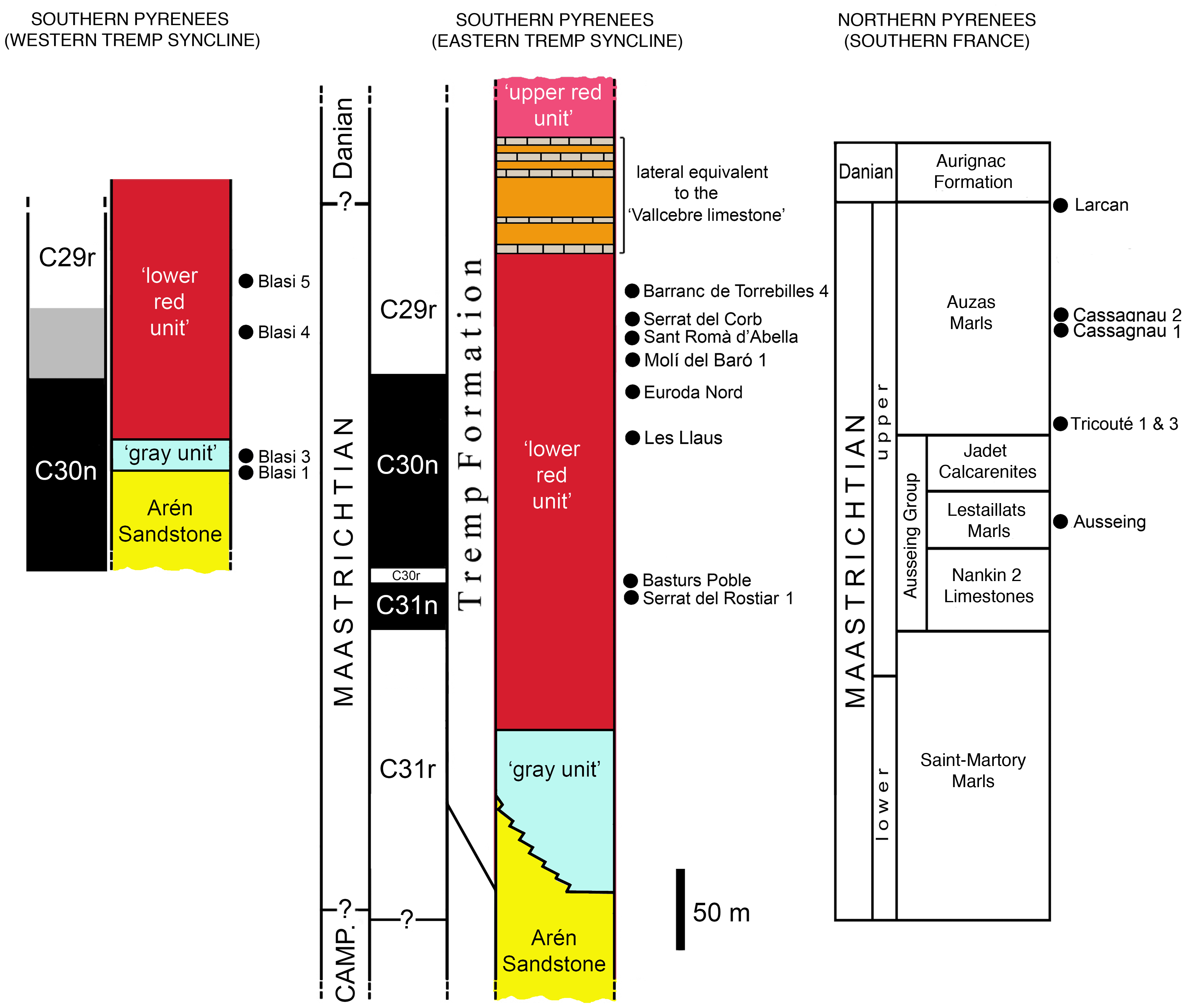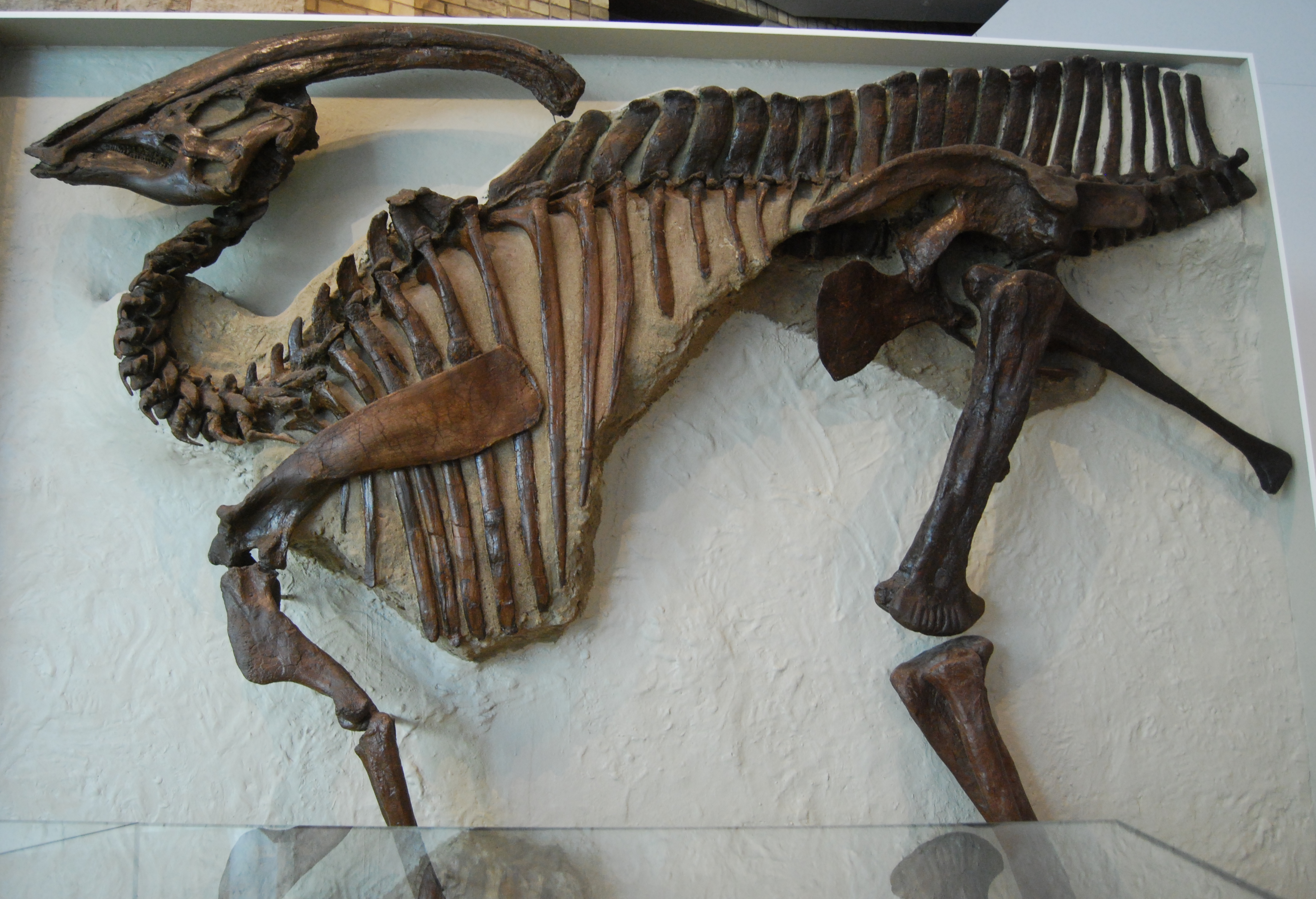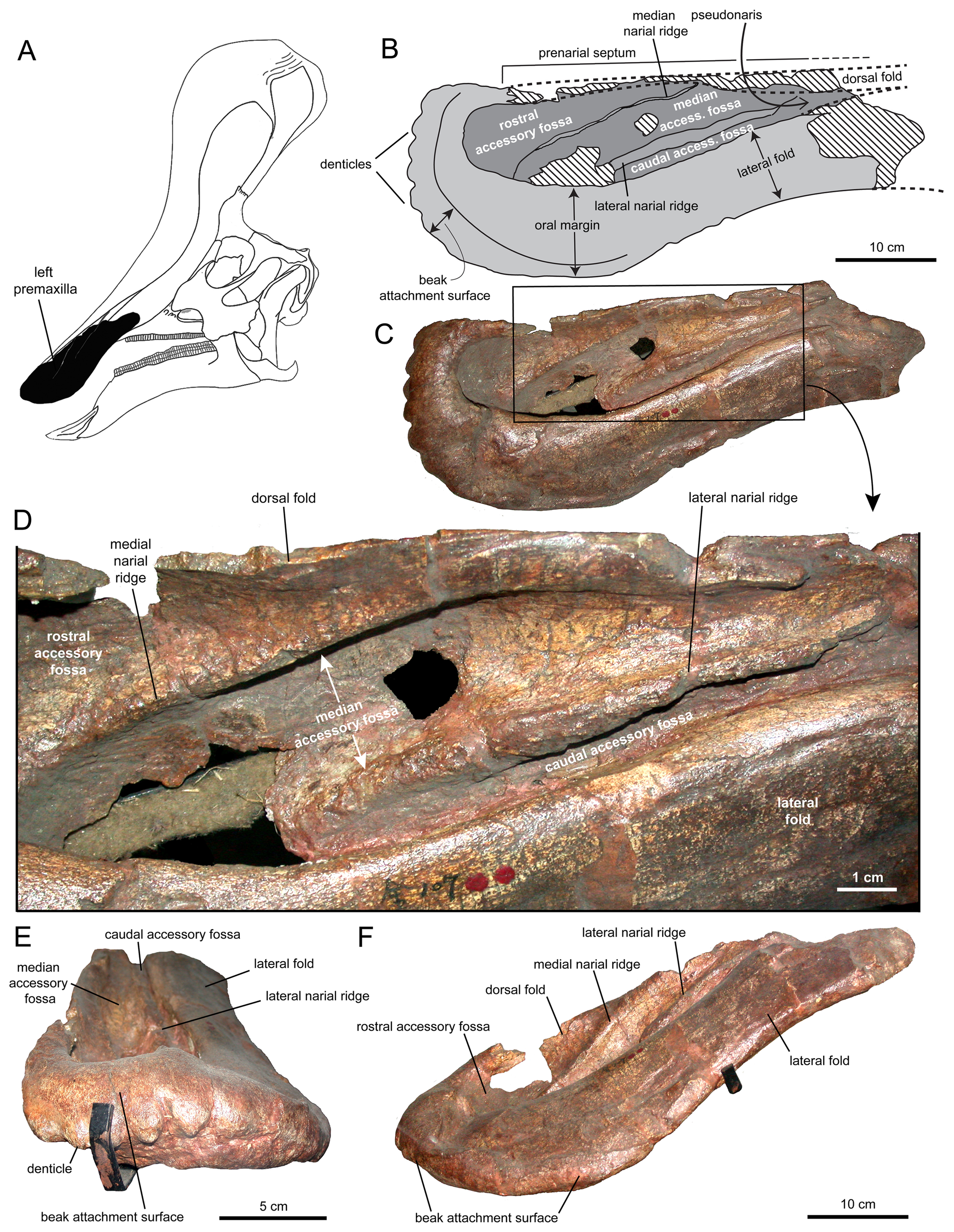|
Adynomosaurus
''Adynomosaurus'' is a genus of lambeosaurine dinosaur from the Late Cretaceous of what is now Catalonia, Spain. First discovered in 2012, it was named in 2019 with the type and only species ''Adynomosaurus arcanus'', as an addition to the very incomplete fossil record of hadrosaurides dinosaurs from the Late Cretaceous of Europe. It is only known from scant material, but is distinguished from other hadrosaurs by its weakly developed shoulder blade which would have had underdeveloped musculature, which lends it its scientific name, partially from the Greek word for "weak". Its exact relationships with other hadrosaurs remain unresolved, with it not consistently being recovered as a relative of any other specific genera, though some studies have allied it with Tsintaosaurini or even found it outside of Hadrosauridae. It would have lived as part of a diverse coastal estuaryweak ecosystem, made up of meandering rivers and mud flats, and fits into a picture of major ecological turnove ... [...More Info...] [...Related Items...] OR: [Wikipedia] [Google] [Baidu] |
Pararhabdodon
''Pararhabdodon'' (meaning "near fluted tooth" in reference to ''Rhabdodon'') is a genus of tsintaosaurin hadrosaurid dinosaur, from the Maastrichtian-age Upper Cretaceous Tremp Group of Spain. The first remains were discovered from the Sant Romà d’Abella fossil locality and assigned to the genus ''Rhabdodon'', and later named as the distinct species ''Pararhabdodon isonensis'' in 1993. Known material includes assorted postcranial remains, mostly vertebrae, as well as from the skull. Specimens from other sites, including remains from France, a maxilla previously considered the distinct taxon ''Koutalisaurus kohlerorum'', an additional maxilla from another locality, the material assigned to the genera ''Blasisaurus'' and ''Arenysaurus'', and the extensive Basturs Poble bonebed have been considered at different times to belong to the species, but all of these assignments have more recently been questioned. It was one of the last non-avian dinosaurs known from the fossil record th ... [...More Info...] [...Related Items...] OR: [Wikipedia] [Google] [Baidu] |
Tsintaosaurini
Tsintaosaurini is a tribe of basal lambeosaurine hadrosaurs native to Eurasia. It is thought to contains the genera ''Tsintaosaurus'' (from China), ''Pararhabdodon'' (from Spain) and '' Koutalisaurus'' (also from Spain), though some studies have questioned its existence as a natural grouping. Classification Tsintaosaurini is part of the family Hadrosauridae, specifically the subfamily Lambeosaurinae. The existence of a tsintaosaur clade of lambeosaurines was first recognized by palaeontologists Albert Prieto-Márquez and Johnathan R. Wagner, who in 2009 published a paper recognizing a phylogenetic relationship between ''Tsintaosaurus'' and ''Pararhabdodon'' based both on shared anatomical traits and a phylogenetic analysis. A 2013 study by Prieto-Márquez corroborated the existence of this grouping, and coined the tribe Tsintaosaurini to refer to it. The type genus is ''Tsintaosaurus'', and it was defined as the smallest clade containing ''Tsintaosaurus spinorhinus'' and ''Para ... [...More Info...] [...Related Items...] OR: [Wikipedia] [Google] [Baidu] |
Koutalisaurus
''Koutalisaurus'' (meaning "spoon lizard", in reference to the shape of the dentary) is a potentially dubious genus of extinct hadrosaurid dinosaur from the Arenysaurini. It is based on a mostly complete dentary from the Maastrichtian-age Upper Cretaceous Tremp Formation near the town of Abella de la Conca, Lleida, Spain. Discovery and naming The holotype dentary, IPS SRA 27, had previously been referred to ''Pararhabdodon'' in 1999,Casanovas, M.L, Pereda-Suberbiola, X., Santafé, J.V., and Weishampel, D.B. (1999). First lambeosaurine hadrosaurid from Europe: palaeobiogeographical implications. ''Geological Magazine'' 136(2):205-211. but comes from a different locality, is based on non-comparable material, and has unusual characteristics, leading Prieto-Marquez ''et al.'' (2006) to place the dentary in the new species ''Koutalisaurus kohleorum''.Prieto-Marquez, A., Gaete, R., Rivas, G., Galobart, Á., and Boada, M. (2006). Hadrosauroid dinosaurs from the Late Cretaceous of Spain ... [...More Info...] [...Related Items...] OR: [Wikipedia] [Google] [Baidu] |
Conques Formation
The Tremp Formation ( es, Formación de Tremp, ca, Formació de Tremp), alternatively described as Tremp Group ( es, Grupo Tremp), is a geological formation in the comarca Pallars Jussà, Lleida, Spain. The formation is restricted to the Tremp or Tremp-Graus Basin ( ca, Conca de Tremp), a piggyback foreland basin in the Catalonian Pre-Pyrenees. The formation dates to the Maastrichtian to Thanetian,Pujalte & Schmitz, 2005, p.82 thus the formation includes the Cretaceous-Paleogene boundary that has been well studied in the area, using paleomagnetism and carbon and oxygen isotopes. The formation comprises several lithologies, from sandstone, conglomerates and shales to marls, siltstones, limestones and lignite and gypsum beds and ranges between in thickness. The Tremp Formation was deposited in a continental to marginally marine fluvial-lacustrine environment characterized by estuarine to deltaic settings. The Tremp Basin evolved into a sedimentary depression with the break-up ... [...More Info...] [...Related Items...] OR: [Wikipedia] [Google] [Baidu] |
Tremp Formation
The Tremp Formation ( es, Formación de Tremp, ca, Formació de Tremp), alternatively described as Tremp Group ( es, Grupo Tremp), is a geological formation in the comarca Pallars Jussà, Lleida, Spain. The formation is restricted to the Tremp or Tremp-Graus Basin ( ca, Conca de Tremp), a piggyback foreland basin in the Catalonian Pre-Pyrenees. The formation dates to the Maastrichtian to Thanetian,Pujalte & Schmitz, 2005, p.82 thus the formation includes the Cretaceous-Paleogene boundary that has been well studied in the area, using paleomagnetism and carbon and oxygen isotopes. The formation comprises several lithologies, from sandstone, conglomerates and shales to marls, siltstones, limestones and lignite and gypsum beds and ranges between in thickness. The Tremp Formation was deposited in a continental to marginally marine fluvial-lacustrine environment characterized by estuarine to deltaic settings. The Tremp Basin evolved into a sedimentary depression with the break-up ... [...More Info...] [...Related Items...] OR: [Wikipedia] [Google] [Baidu] |
Basturs Poble Bonebed
The Basturs Poble bonebed is a mega-bonebed of hadrosaur dinosaur fossils, discovered in Catalonia, Spain. Hundreds of hadrosaur fossils have been found at the site, which would have been on a large island during the Late Cretaceous when the animals preserved were alive. Despite the enormous amount of specimens, taxonomically informative material has been scarce at the site, leading to extensive debate as to its nature. The number of species present, age of the individuals present in the sample, and taxonomic identity of the remains have been the primary matters of debate. Previous considered to represent '' Koutalisaurus'', ''Pararhabdodon'', or multiple, perhaps dwarf species, it is currently thought that a single, indeterminate species of lambeosaurine was present at the site, and that individuals of many different ages were present. Discovery and extent Marc Boada discovered, in the late 1990s, a new fossil-bearing locality from the village of Basturs, Catalonia. As the villag ... [...More Info...] [...Related Items...] OR: [Wikipedia] [Google] [Baidu] |
Hadrosaurid
Hadrosaurids (), or duck-billed dinosaurs, are members of the ornithischian family Hadrosauridae. This group is known as the duck-billed dinosaurs for the flat duck-bill appearance of the bones in their snouts. The ornithopod family, which includes genera such as ''Edmontosaurus'' and '' Parasaurolophus'', was a common group of herbivores during the Late Cretaceous Period. Hadrosaurids are descendants of the Upper Jurassic/Lower Cretaceous iguanodontian dinosaurs and had a similar body layout. Hadrosaurs were among the most dominant herbivores during the Late Cretaceous in Asia and North America, and during the close of the Cretaceous several lineages dispersed into Europe, Africa, South America and Antarctica. Like other ornithischians, hadrosaurids had a predentary bone and a pubic bone which was positioned backwards in the pelvis. Unlike more primitive iguanodonts, the teeth of hadrosaurids are stacked into complex structures known as dental batteries, which acted as effectiv ... [...More Info...] [...Related Items...] OR: [Wikipedia] [Google] [Baidu] |
Taxa
In biology, a taxon (back-formation from ''taxonomy''; plural taxa) is a group of one or more populations of an organism or organisms seen by taxonomists to form a unit. Although neither is required, a taxon is usually known by a particular name and given a particular ranking, especially if and when it is accepted or becomes established. It is very common, however, for taxonomists to remain at odds over what belongs to a taxon and the criteria used for inclusion. If a taxon is given a formal scientific name, its use is then governed by one of the nomenclature codes specifying which scientific name is correct for a particular grouping. Initial attempts at classifying and ordering organisms (plants and animals) were set forth in Carl Linnaeus's system in ''Systema Naturae'', 10th edition (1758), as well as an unpublished work by Bernard and Antoine Laurent de Jussieu. The idea of a unit-based system of biological classification was first made widely available in 1805 in the int ... [...More Info...] [...Related Items...] OR: [Wikipedia] [Google] [Baidu] |
Parasaurolophus Cyrtocristatus
''Parasaurolophus'' (; meaning "near crested lizard" in reference to '' Saurolophus)'' is a genus of herbivorous hadrosaurid ornithopod dinosaur that lived in what is now North America and possibly Asia during the Late Cretaceous Period, about 76.5–73 million years ago. It was a herbivore that walked both as a biped and as a quadruped. Three species are universally recognized: ''P. walkeri'' (the type species), ''P. tubicen'', and the short-crested ''P. cyrtocristatus''. Additionally, a fourth species, ''P. jiayinensis'', has been proposed, although it is more commonly placed in the separate genus ''Charonosaurus''. Remains are known from Alberta (Canada), New Mexico and Utah (United States), and possibly Heilongjiang (China). The genus was first described in 1922 by William Parks from a skull and partial skeleton found in Alberta. ''Parasaurolophus'' was a hadrosaurid, part of a diverse family of Cretaceous dinosaurs known for their range of bizarre head adornment ... [...More Info...] [...Related Items...] OR: [Wikipedia] [Google] [Baidu] |
Tsintaosaurus Spinorhinus
''Tsintaosaurus'' (; meaning "Qingdao lizard", after the old transliteration "Tsingtao") is a genus of hadrosaurid dinosaur from China. It was about long and weighed . The type species is ''Tsintaosaurus spinorhinus'', first described by Chinese paleontologist C. C. Young in 1958. A hadrosaur, ''Tsintaosaurus'' had a characteristic 'duck bill' snout and a battery of powerful teeth which it used to chew vegetation. It usually walked on all fours, but could rear up on its hind legs to scout for predators and flee when it spotted one. Like other hadrosaurs, ''Tsintaosaurus'' probably lived in herds. Discovery and naming In 1950, at Hsikou, near Chingkangkou, in Laiyang, Shandong, in the eastern part of China, various remains of large hadrosaurids were uncovered. In 1958 these were described by Chinese paleontologist Yang Zhongjian ("C.C. Young") as the type species ''Tsintaosaurus spinorhinus''. The generic name is derived from the city of Qingdao, earlier often transliterat ... [...More Info...] [...Related Items...] OR: [Wikipedia] [Google] [Baidu] |
Taxon
In biology, a taxon (back-formation from ''taxonomy''; plural taxa) is a group of one or more populations of an organism or organisms seen by taxonomists to form a unit. Although neither is required, a taxon is usually known by a particular name and given a particular ranking, especially if and when it is accepted or becomes established. It is very common, however, for taxonomists to remain at odds over what belongs to a taxon and the criteria used for inclusion. If a taxon is given a formal scientific name, its use is then governed by one of the nomenclature codes specifying which scientific name is correct for a particular grouping. Initial attempts at classifying and ordering organisms (plants and animals) were set forth in Carl Linnaeus's Linnaean taxonomy, system in ''Systema Naturae'', 10th edition (1758), as well as an unpublished work by Bernard de Jussieu, Bernard and Antoine Laurent de Jussieu. The idea of a unit-based system of biological classification was first mad ... [...More Info...] [...Related Items...] OR: [Wikipedia] [Google] [Baidu] |
Autapomorphy
In phylogenetics, an autapomorphy is a distinctive feature, known as a derived trait, that is unique to a given taxon. That is, it is found only in one taxon, but not found in any others or outgroup taxa, not even those most closely related to the focal taxon (which may be a species, family or in general any clade). It can therefore be considered an apomorphy in relation to a single taxon. The word ''autapomorphy'', first introduced in 1950 by German entomologist Willi Hennig, is derived from the Greek words αὐτός, ''autos'' "self"; ἀπό, ''apo'' "away from"; and μορφή, ''morphḗ'' = "shape". Discussion Because autapomorphies are only present in a single taxon, they do not convey information about relationship. Therefore, autapomorphies are not useful to infer phylogenetic relationships. However, autapomorphy, like synapomorphy and plesiomorphy is a relative concept depending on the taxon in question. An autapomorphy at a given level may well be a synapomorphy at ... [...More Info...] [...Related Items...] OR: [Wikipedia] [Google] [Baidu] |









